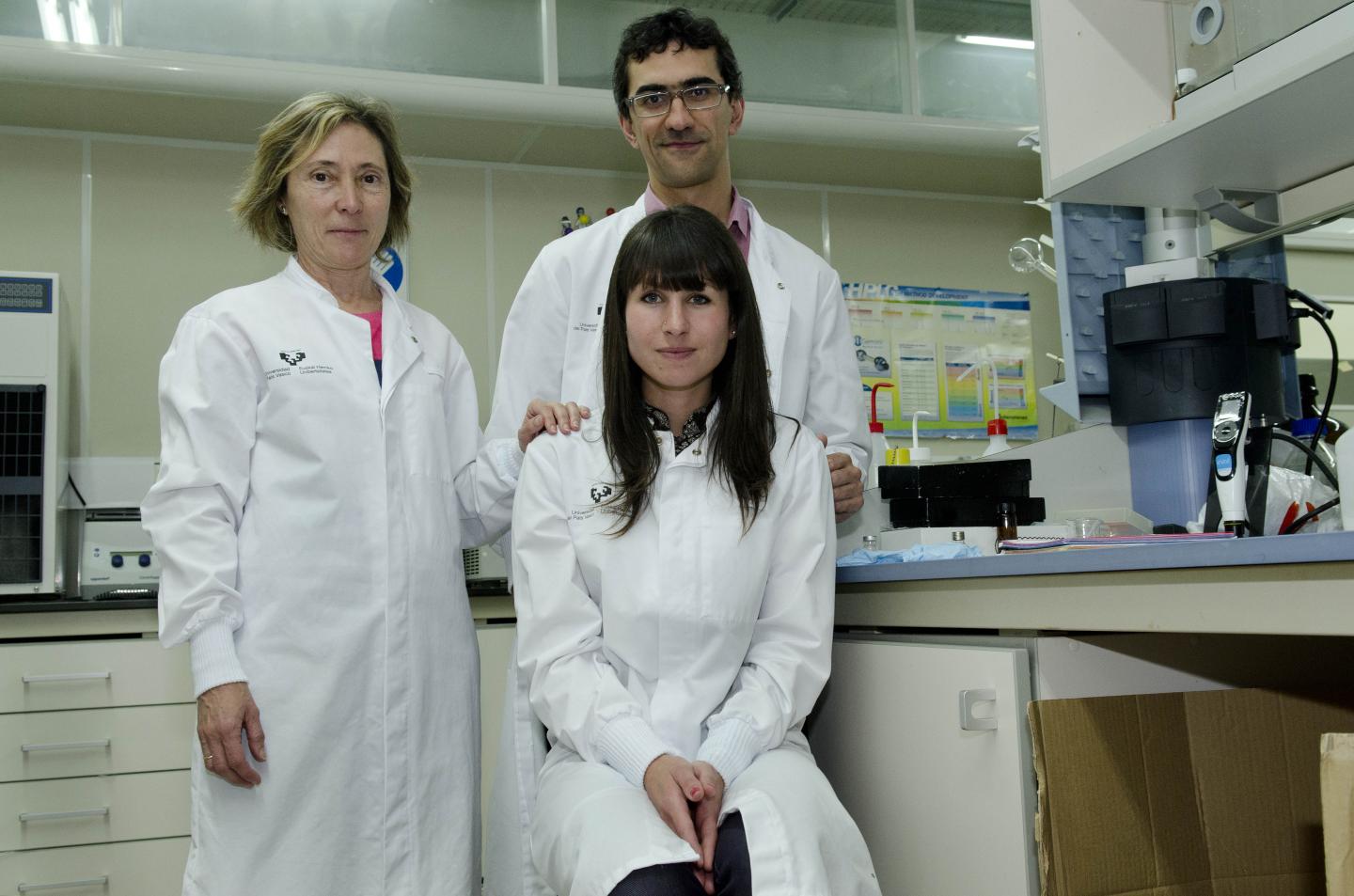In collaboration with the United States Department of Agriculture, the University of the Basque Country Department of Analytical Chemistry has identified the volatile compounds in damaged walnuts that insects find attractive and which is threatening the harvests of these nuts in California.
These are the first studies carried out on walnuts which are designed to specify the components of the aroma and which can be used to control the moth pests in the most sustainable way, besides helping to cut the use of pesticides and control agents.
The UPV/EHU's research team, comprising professor and lecturer in Analytical Chemistry Rosa María Alonso, Dr Itxaso San Román, plus the Support of the technician of the Central Analysis Service of Bizkaia (SGIker) Dr Luis Bartolomé, has analyzed the data coming from walnut crops in California. The work has been carried out in collaboration with Dr. John James Beck of the Agricultural Research Services of the United States Department of Agriculture.
The outcome of the research is that the team has identified the aromas that differentiate between intact walnuts and damaged ones and which may lure insect pests that harm the Californian crops. This pioneering research is opening up the way for conducting studies on pest control in autochthonous crops.

Rosa María Alonso, Itxaso San Román and Luis Bartolomé. Credit: UPV/EHU
Two thirds of the walnuts consumed worldwide come from the central valley in California and so do over 80% of those eaten in Spain. During the last 50 years two invasions by moths -the codling moth (Cydia pomonella) and the navel orangeworm (Amyelois transitella, Lepidotera, Pyralidae)- have been threatening walnut production harvest after harvest. They lay their eggs in the damaged nuts and encourage the propagation of the fungus Aspergillus with consequences not only for ensuring food safety but also for commercial and economic development.
The strategies of the last century to control the pests have focussed on the use of pesticides and control agents to which certain insects have developed resistance. This research is advancing in the search for the aromatic compounds that attract them naturally at key moments like their reproduction and feeding and which when combined with sustainable environmental techniques offer the possibility of synthesising more selective and more efficient agrochemical products.
The UPV/EHU team has analysed the data coming from intact walnuts and previously damaged ones so that once their volatile compounds have been identified and compared, they can determine whether the damaged nuts emit any exclusive aroma. The samples were selected between May and September 2014 in five phenological phases, five climate and biological moments of the walnut tree. As a result of the data processing applied to the samples, the UPV/EHU team has identified 92 aromatic components.
Of them, eight compounds are characteristic of damaged nuts (pinocarvone, α-aldehyde canfolenic, chrysanthenone, trans-pinocarveol, trans-β-farnesene, trans-β-verbenol, α-terpinene and α-terpinolene). The combination of these volatile compounds will enable a blend that is attractive to insects to be synthesised and which can be used to control and monitor the pests that harm the walnuts.
Citation: Itxaso San Román, Luis Bartolomé, Wai S. Gee, Rosa M. Alonso, John J. Beck. Comparison of ex situ volatile emissions from intact and mechanically damaged walnuts. DOI: 10.1016/j.foodres.2015.04.009




Comments